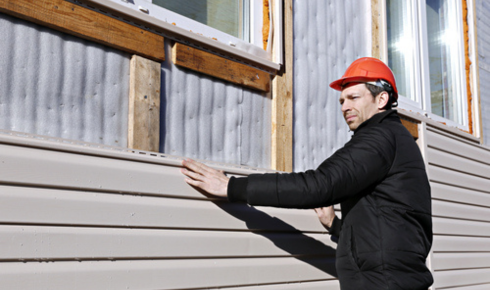Cladding has become an essential element in modern architecture, offering both functional and aesthetic benefits. It refers to the application of one material over another to provide a protective layer, enhance insulation, or improve the visual appeal of a building. From residential homes to commercial structures, cladding plays a crucial role in increasing durability, energy efficiency, and curb appeal.
What is Cladding?
In simple terms, cladding is the process of covering the exterior or interior surfaces of a building with a material that serves as a protective shield. This outer layer can be made of various materials such as metal, stone, brick, vinyl, composite panels, or timber. The primary purpose is to safeguard the building against environmental factors like rain, wind, sunlight, and temperature changes, while also contributing to its overall design.
Types of Cladding Materials
There are several types of cladding materials, each offering distinct characteristics:
- Metal Cladding – Made from aluminum, steel, or zinc, it is lightweight, weather-resistant, and offers a sleek, modern finish.
- Timber Cladding – Natural wood panels add warmth and character to buildings, often used in eco-friendly designs.
- Vinyl Cladding – A cost-effective and low-maintenance option popular in residential properties.
- Stone and Brick Cladding – Provides a timeless and sturdy appearance, with excellent durability.
- Composite Cladding – Combines materials like wood fibers and plastics for a versatile, long-lasting finish.
Benefits of Cladding
Cladding offers multiple advantages beyond just aesthetics:
- Weather Protection – Shields the building from harsh weather conditions, preventing structural damage.
- Thermal Insulation – Helps maintain indoor temperatures, reducing heating and cooling costs.
- Sound Insulation – Reduces noise penetration, making interiors more peaceful.
- Low Maintenance – Many cladding materials require minimal upkeep, ensuring long-term cost savings.
- Increased Property Value – A well-clad building often has a higher market value due to its improved appearance and durability.
Cladding in Modern Architecture
Architects and builders are increasingly using cladding as a design statement. The variety of textures, colors, and patterns allows for creative freedom while ensuring performance standards are met. For instance, external cladding systems are engineered to blend style with functionality, offering modern buildings a contemporary and striking look without compromising on structural integrity.
Cladding is also vital in sustainable construction. Many modern cladding materials are recyclable, energy-efficient, and sourced from sustainable resources. Innovations such as ventilated facades and solar-integrated cladding panels are becoming popular, combining protection with renewable energy generation.
Installation and Maintenance
Proper installation is key to maximizing the benefits of cladding. It involves preparing the surface, ensuring the correct alignment, and securing panels or materials using appropriate fixings. Poor installation can lead to water leaks, structural issues, and reduced performance. Therefore, hiring experienced professionals is crucial for long-lasting results.
Maintenance requirements vary depending on the material. For example, metal cladding may only need periodic cleaning to maintain its shine, while timber cladding might require occasional sealing or staining to preserve its natural beauty. Regular inspections help detect any early signs of damage, ensuring timely repairs and extending the lifespan of the cladding system.
Safety and Regulations
Cladding safety has gained significant attention in recent years, particularly regarding fire resistance. It is essential to select materials that meet local building codes and fire safety standards. In many regions, non-combustible materials are preferred for high-rise buildings to reduce the risk of fire spread.
Conclusion
Cladding is far more than just a decorative covering—it is a vital component of a building’s overall performance. Whether the goal is to protect against the elements, improve energy efficiency, or elevate architectural style, the right cladding choice can transform a property. With advancements in materials and technology, cladding continues to evolve, offering builders and homeowners innovative solutions that balance beauty, durability, and sustainability.
By investing in high-quality wall cladding, property owners can enjoy long-term protection, reduced maintenance costs, and enhanced visual appeal, making it an intelligent choice for modern construction projects.



